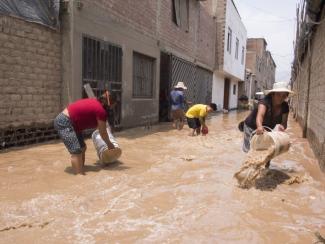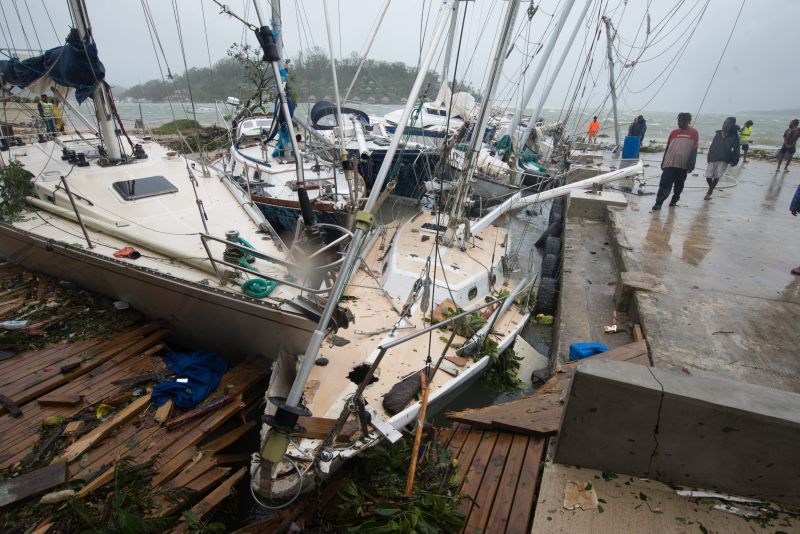Global affairs
The needs of displaced persons

Every year, millions of people are displaced due to disasters caused by natural hazards such as floods, tropical storms, earthquakes, landslides, droughts, salt-water intrusion, glacial melting, glacial lake outburst floods and melting permafrost. Other people have to leave their homes because of the impacts of the rising sea level, coastal erosion, desertification and environmental degradation in general. Small island developing states (SIDS) and least developed countries (LDCs) are hit hardest, but middle-income countries face specific challenges too.
From 2008 to 2014, 184 million people were displaced by sudden-onset disasters worldwide. That number is equal to more than one third of the population of the EU. Matters are probably even worse, since the estimates may not fully reflect the number of persons who are displaced in the context of slow-onset events. These people are difficult to identify, so there is a lack of data. We know, however, that coastal regions are affected in particular, and a large share of the world population lives within 100 kilometres of the sea shore.
In 1990, the first Assessment Report of the Intergovernmental Panel on Climate Change (IPCC) indicated that global warming could trigger large movements of people, particularly from coastal areas. This has since happened in several world regions. Speaking at the annual council of the International Organization for Migration (IOM), Peter Thomson, the president of the UN General Assembly, pointed out in 2016: “You cannot stay in your traditional homeland if it is turned into a desert, and you cannot stay in your traditional rice delta if it is under one meter of water.”
Those who cross borders in the context of disasters need protection, but they often do not get any. The situation of people who flee from the impacts of slow-onset events and climate change is particularly difficult. Their needs are not as obvious as those of people displaced by sudden-onset events. Moreover, whether persons are forced to cross a border in sudden or slow-onset contexts, they will not be considered as refugees under international law, in most cases, so they have no right to be admitted and stay in a foreign country.
The Nansen Initiative
To address the gaps, the Nansen Initative was launched in 2012. Its result was the Nansen Initiative Protection Agenda, which was endorsed by 109 governments in October 2015 (see box). To follow up, the Platform on Disaster Displacement (PDD) was established in 2016 under German leadership. This multi-stakeholder forum is cooperating with various international partners, including the IOM, the UN Refugee Agency (UNHCR), as well as leading universities. The Platform is based in Geneva and has four strategic priorities:
- address knowledge and data gaps,
- enhance the use of effective practices at the national, regional and international levels,
- promote policy coherence and
- promote policy and normative development in gap areas.
Indeed, knowledge and data gaps persist. In particular they relate to:
- cross-border movements,
- human mobility in slow-onset hazard contexts,
- future displacement risks and
- sustainable solutions for disaster displaced persons.
To address the gaps, the Platform is proposing measures to compile existing data, consolidate information and generate new knowledge. Thorough assessments depend on the availability of long-term data which must be disaggregated by age, gender, diversity and location.
In cooperation with the Office of the UN High Commissioner for Human Rights (OHCHR), the Platform is preparing a study concerning human-rights based approaches. Special attention is being paid to slow-onset events that lead people to cross borders.
Even though international law is largely silent on whether countries must admit disaster-displaced foreigners, more than 50 countries have decided not to return people in such circumstance. The Platform is promoting a pragmatic approach, rather than calling for a new, legally binding international convention. Nations and regional organisation are encouraged to integrate effective practices identified in the Protection Agenda into their own policies.
Delegations from north and central-American countries agreed on common guidelines for the admission and stay of cross-border disaster-displaced persons at the XXI Regional Conference on Migration (RCM) in Honduras in November 2016. The Platform seeks to facilitate similar processes in other world regions.
The Platform on Disaster Displacement is a state-led initiative for sharing experience and drafting policies. It is based in Geneva. This essay was written by members of its Coordination Unit.
http://disasterdisplacement.org/
Twitter: @DDisplacement
Link
Germanwatch, 2017: Global Climate Index 2017 – Who suffers most from extreme weather events? Weather-related loss events in 2015 and 1996 to 2015.
https://germanwatch.org/en/download/16411.pdf











